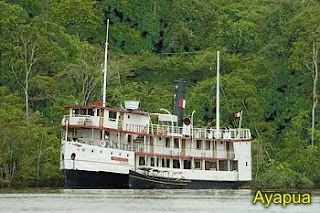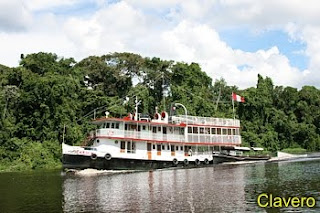Christmas is celebrated on 24th with much fanfare. In the evening, there is a family get-together to celebrate Christmas which is also called the Christmas for Children as this is the time children open gifts. There is preparation of pavo (turkey) in most of the houses as well as apple sauce and tamales. Panatones (sweet breads) are also very popular. The Christmas meals is served at midnight along with homemade hot chocolate made with rich chocolate, cinnamon and cloves.
After the dinner and the children are put to bed the party starts with furniture moved aside to allow for dancing. These parties often go on until daylight. Christmas Day itself becomes a day of well-needed rest.
Nativity scenes are placed in churches, homes and the main plaza. They often have a regional flare as can be seen in the photos of the Nativity scene from the Plaza de Armas in Iquitos below.

 Click on photos to enlarge
Click on photos to enlarge



















































